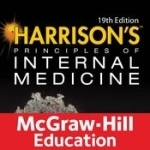
Wooden Block Puzzle Game
Games and Entertainment
App
It's FUN, simple and 100% RELAXING guaranteed! Get your BEST puzzle today! Let's join over...

Pokémon GO
Games and Health & Fitness
App Watch
Join Trainers across the globe who are discovering Pokémon as they explore the world around them....

Corkz - Wine Reviews, Database, Cellar Management
Food & Drink and Travel
App
One of TIME Magazine’s top 50 apps “Corkz if the best all-purpose wine app available for...

Harrison’s Principles of Internal Medicine
Education and Medical
App Watch
The landmark guide to internal medicine—updated and streamlined for today’s students and...
education medicine

Tattoo You Premium - Use your camera to get a tattoo
Catalogs and Entertainment
App
The premium tattoo app to add tattoos to your photos with no in app purchases required. See what...

Babbel – Learn 14 languages
Education and Travel
App
Learn Spanish, French, Italian, German, and many more languages with Babbel, the shortest path to...

The Bruce Trail
Navigation and Travel
App
The Bruce Trail App Plan, track, and log your hikes on Canada’s oldest and longest marked...

ChineseSkill -Learn Mandarin Chinese Language Free
Education and Reference
App
ChineseSkill is the most effective app to learn Chinese mandarin. Features: 1. Game-based learning...

Stick Pick
Education and Productivity
App
Join over 50,000 teachers, like EdTechChic, who says: "Say goodbye to your coffee can with popsicle...

Space by Tinybop
Education and Reference
App
Boldly go where no kid has gone before in 3, 2, 1…. Liftoff! Travel into space to visit 8...